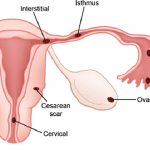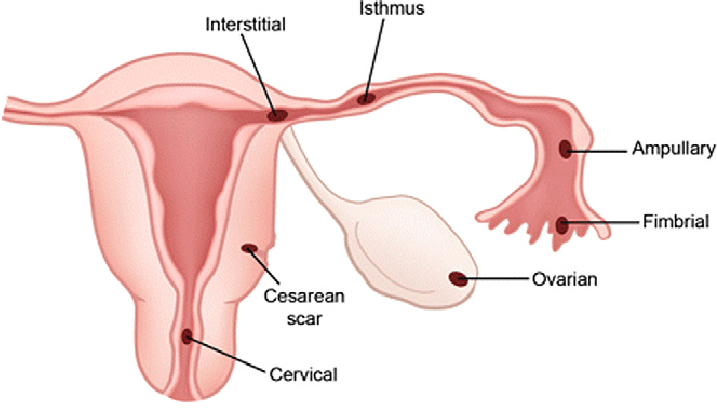A page on guidelines of using methotrexate in treatment of ectopic pregnancy, dosage of methotrexate in treatment of ectopic pregnancy.
Ectopic pregnancy (EP) is a condition in which the fertilized ovum implants in a site other than the endometrium of the
normal uterine cavity. About 98 % occur in the fallopian tube; over 1% are abdominal, and the remaining I % occur in the cervical canal, ovary, or in a rudimentary horn of the uterus.
In the tube, 80% occur in the ampulla and infundibulum; 12 % are isthmic, 5% are fimbrial, and 2 % intramural.
The management of ectopic pregnancy may be surgical or medical. In the article I am going to only discuss the use of methotrexate in the treatment of ectopic pregnancy.
Methotrexate chemotherapy
The objectives of methotrexate therapy are to avoid surgery altogether, to cause less tubal damage and so retain fertility
potential and to reduce management costs.
Methotrexate is especially cytotoxic to trophoblastic tissue and has been foundto have a success rate of 92 % in the management of EP.
To be eligible for methotrexate therapy, the following conditions must be satisfied:
- The patient will reliably comply with follow-up insuuctions .
- She is after counselling prepared to accept the treatment failure rate of 5 to 10%.
- the pregnancy is definitely within the tube.
- the greatest diameter of the gestational sac when measured ultrasonographically is 13.5cm.
- there is no clinical evidence of active bleeding or tubal rupture.
- ultrasonography does not show fetal heart activity.
- serum hCG level is < 1,500mIU/mI.
- serum progesterone level is < 10 ng/ml.
- any blood in the POD is < 100 ml.
If monitoring with hCG and ultrasound scan is started early in women with risk factors, more than one-third with EP will satisfy the above criteria.
Methotrexate regimen
1. The following investigations are first performed – Full Blood Count and platelets, liver function tests and renal functions tests.
2. The patient is given a single dose of 50 mg/m2 intramuscularly.
3. The dose is repeated if the Day 7 B-hCG level is not more than15% lower than the pre-treatment value, or if the Day 7 B-hCG is > 1 ,000 mlU/mI.
4. Sexual intercourse is prohibited until the hCG becomes undetectable.
5. After the initial pelvic examination, no pelvic examination is performed until the hCG becomes undetectable.
6. Folic acid and multivitamins with folic acid should not be taken.
The above regimen has the following outcome rates: success rate of 90%; tubal patency 81%, total fertility 69%, intra-uterine pregnancy 61 %, and repeat EP 8%.
Three to 7 days after start of therapy, some patients develop severe lower abdominal pain which may last as long as half a day and may be difficult to differentiate from tubal rupture.
It may be due to tubal abortion. It is important to monitor the vital
signs and watch – for the abdominal signs of tubal rupture.
lf the patient remains haemodynamically stable and the pain subsides, no further treatment is necessary.
Monitoring and follow-up after Methotrexate therapy
1. The patient is asked about symptoms of tubal rupture: vaginal bleeding, abdominal pain, weakness, syncope.
2. Serial monitoring of vital signs is done.
3. Serial quantitative measurements of B-hCG on Days 1,3,7, and weekly after are done until B-hCG is no longer
detectable. When therapy is successful, B-hCG disappears by Day 21 in most patients and by Day 28 in every case .
4. Serial weekly ultrasound scan is done to measure the size of the EP mass and to assess fluid in the POD.
5. Weekly FBC and platelets, liver function tests, renal function tests are also done.

Ctedit: Researchgate
Please leave a comment .
Source: Principles and Practice of Surgery by Badoe





















